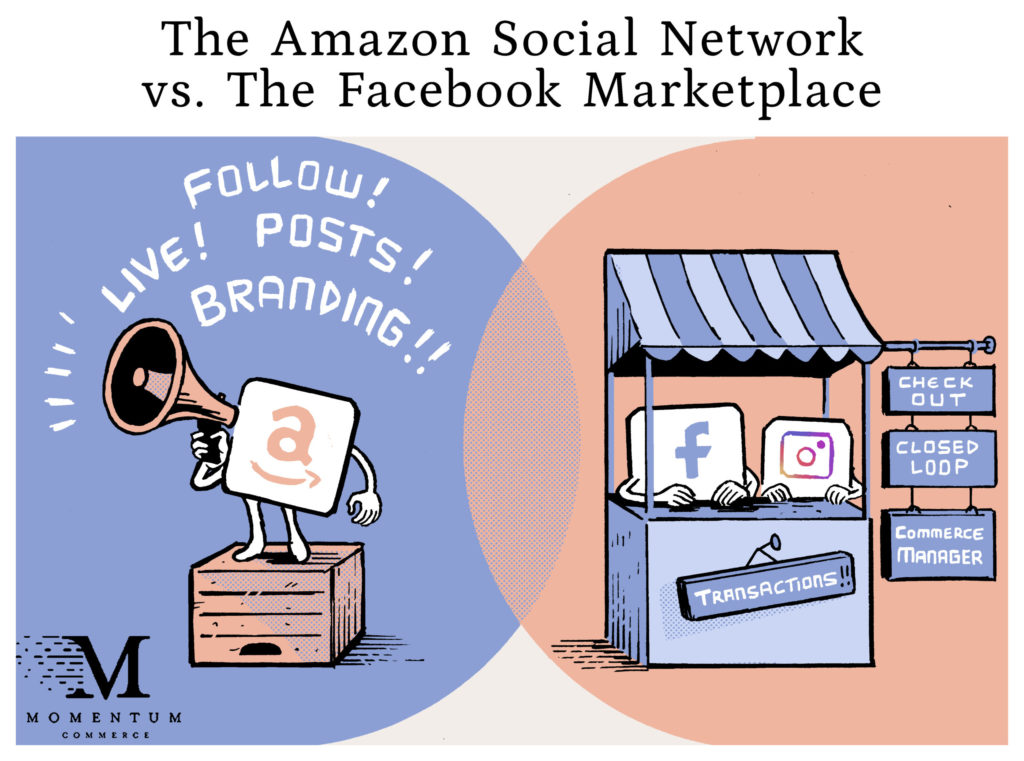
Is Amazon the Next Social Network?
To many, Amazon is a platform for buying things. When you are in need of something, you sign on, find it and buy it – perhaps you do a little searching and product comparison, but there is little influence on your purchase outside of the products you’re looking for. That’s why it can be hard to think of Amazon as an emerging social network – it doesn’t have the idea of “likes” and there aren’t influencers with hundreds of thousands of followers that make money from product placement posts within a feed…yet.
Taking a step back, you’ll start to notice a shift in Amazon from the e-commerce platform known for selling products to a more social platform that allows customers to follow and engage with brands, purchase old favorites while finding new ones, and satisfy our increasingly short attention span with new imagery, product pages and ad types like short videos.
At the same time, we’ve seen e-commerce taking over social media networks. Facebook advertising has been around for over a decade, giving brands the ability to target specific audiences through the networking platform and continually working more and more advertisements into the news feed among organic posts from your “friends” and accounts that you follow. Instagram has followed suit, adding advertisements disguised as organic posts to the feed, placing direct click-to-order links within ads, and tagging products in posts for quick purchase.
What we’re witnessing is a different path to the same end result – Amazon started as an e-commerce platform and is moving towards being more social, and social networks are moving more towards e-commerce.
The latest update in Amazon’s path to a social network is a “Follow” button on brands’ storefronts, a part of Amazon’s new “Manage Your Customer Engagement” tool. This allows brands to connect directly with customers to build relationships, increase retention and drive more engagement – including sending direct emails with new products or promotions.
To leverage the tool, you must be a brand owner and enrolled in Brand Registry on Amazon. Once set up in the tool, you can send emails from your brand to customers who have purchased from your Amazon stores, allowing brands to take advantage of email marketing for the first time ever through Amazon.
When a customer “follows” a brand, they will see more of that brand’s content on Amazon pages through Amazon Posts. Posts is currently in beta and is a free way to show branded content and images to relevant shoppers as they browse the product categories that you see on Amazon. The posts have a “Follow” button as well, giving multiple ways for customers to choose to see more of your brand.
A lot of this may sound like what brands are already doing in their off-Amazon marketing efforts, using tools such as a CRM to build customer databases and outreach campaigns. The key here is that you now have access to those customers who may search on your site for the product they want before going to Amazon to bundle with other purchases or to see if pricing is lower and shipping time is faster – which in many cases, especially for small businesses, it is.
This is a huge step in the direction towards putting brands first over individual sellers, which Amazon has been slow to do. The pressure comes from the biggest brands who were initially reluctant to sell on Amazon but were pushed there due to consumer behavior and the COVID-19 pandemic. These brands want control over how their brand is viewed on Amazon – from custom colors to match their branding to language that mirrors the brand’s voice. This allows for consistency between a retailer.com, brick and mortar store, and an Amazon storefront.
Who wins in this battle to the perfect combination of e-commerce platform and social network? Both sides have shown flexibility in making changes to appease to brands and users alike, so it’s hard to pick a front runner. However, one thing is clear – as Amazon continues down the path to becoming more social, it will be increasingly important to ensure your brand is registered and your storefront is built to replicate your branding to take advantage of these advancements.




